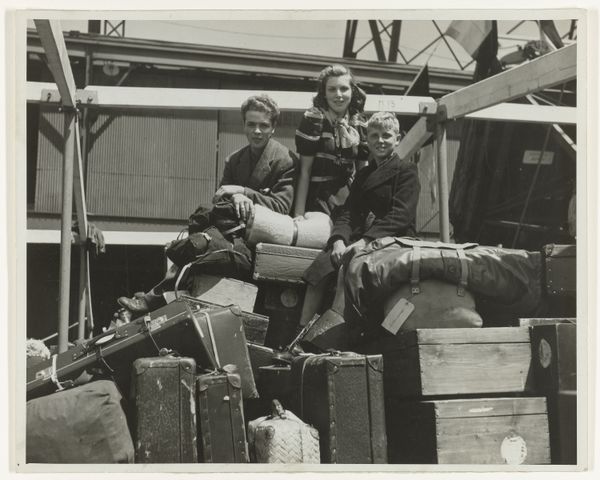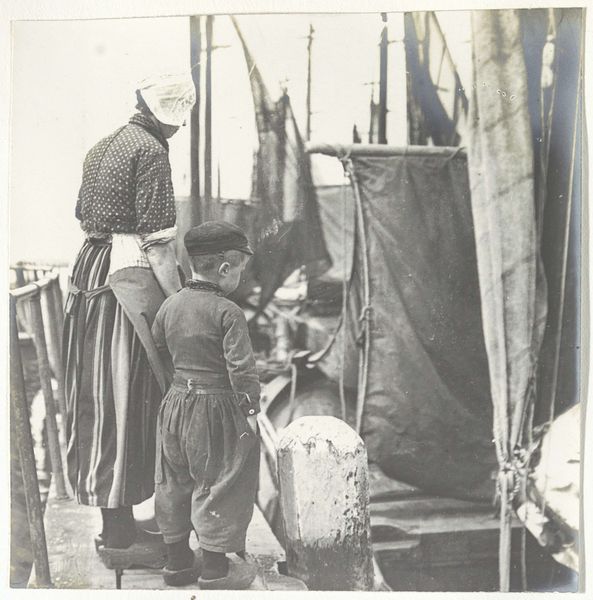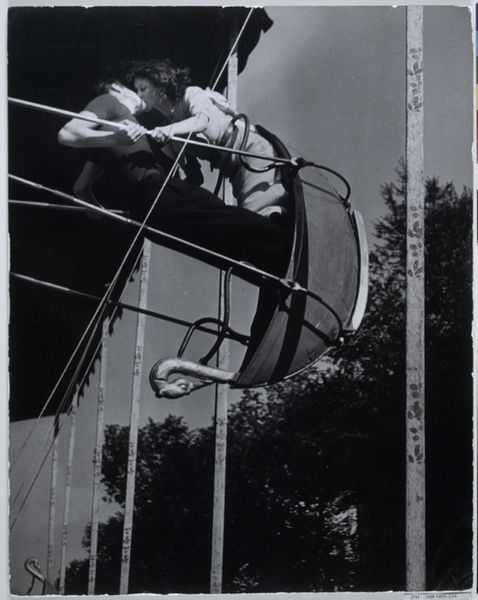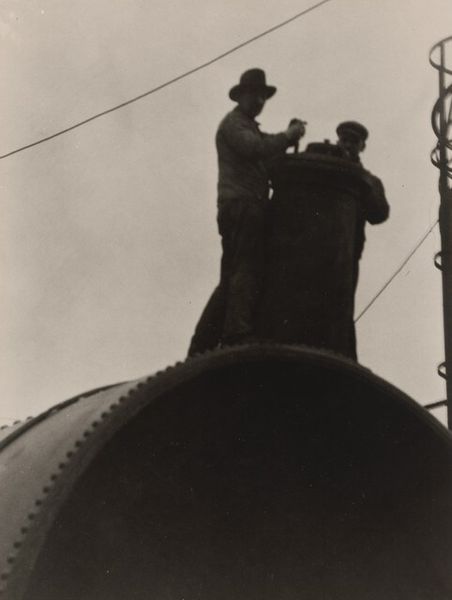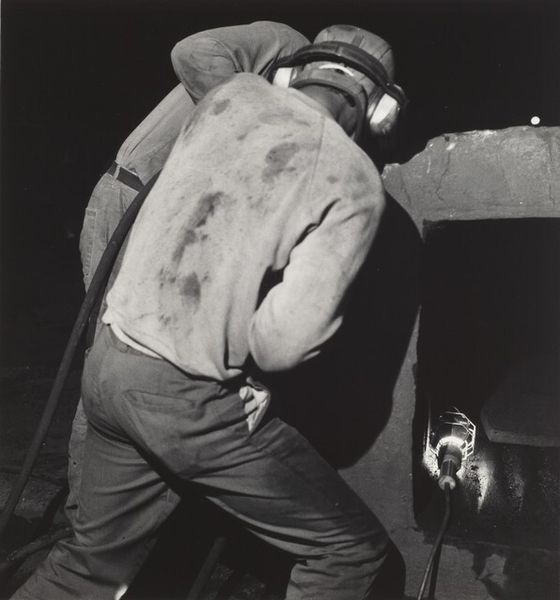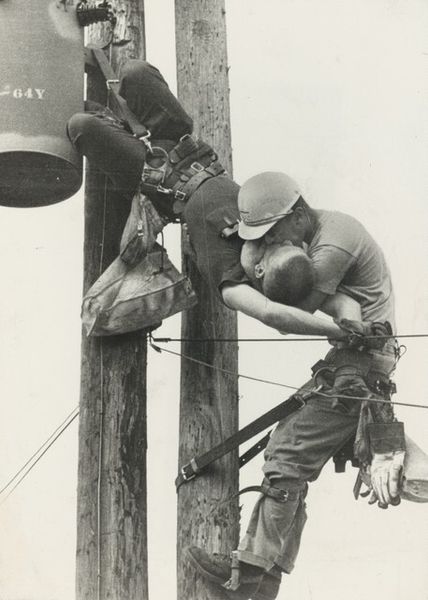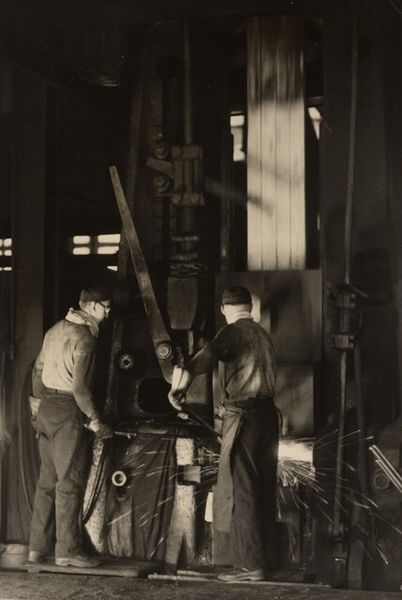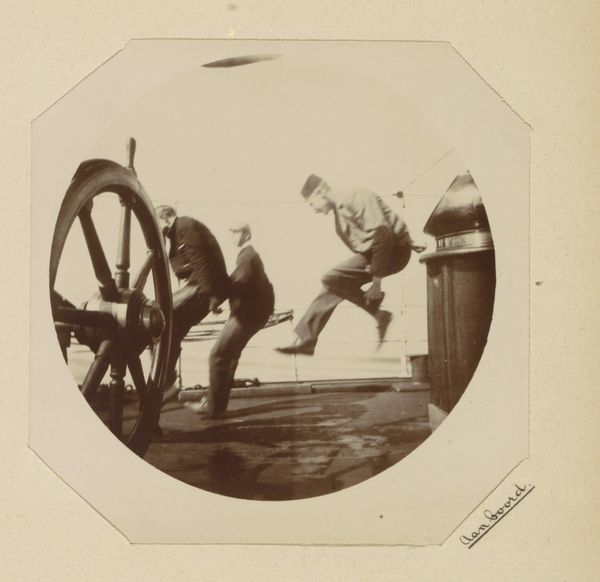
photography, gelatin-silver-print
#
portrait
#
17_20th-century
#
ship
#
landscape
#
photography
#
black and white theme
#
black and white
#
gelatin-silver-print
#
genre-painting
#
realism
Copyright: Public Domain
Karl Theodor Gremmler captured "Untitled (Documentation of Deep-Sea Fishing)" with photography, freezing a moment in time. The photograph has captured something real, but in the way it's framed it takes on a symbolic charge. Look at the angle, the men are below us, toiling, pulling on this great weight. I can practically feel the strain, the way the artist has rendered their arms. The surface of the photo itself is smooth and cool, but it belies the rough, physical labor it depicts. The contrast between the light sky and the dark clothing adds to the drama, emphasizing the workers' struggle against the elements. There's a timeless quality, like August Sander's portraits of German workers, but with a twist. These fishermen, caught in the act, become symbols of human endeavor. It's about the ongoing conversation of art, where an image can hold both a specific moment and a larger, more universal meaning. And, as always, it's up to us to find our own way through the ambiguity.
Comments
stadelmuseum over 1 year ago
⋮
Karl Theodor Gremmler belonged to the generation that embarked on their careers after the National Socialist accession to power. He specialized in photos of industrial food production. His customers included the biscuit manufacturer Bahlsen, “Kaffee HAG”, and above all the Hochseefischerei- Gesellschaft Hamburg, Andersen & Co. K. G. Gremmler photographed the products’ entire process chain from the harvest or catch to the packaging. The photo book Men at the Net, published in 1939 on his own initiative, is a detailed portrayal of navigation and fishing. With the aid of harsh shadows, oblique perspectives, and views from below, his scenes of workers in heroic poses were meant to convey the progressiveness of the German food industry. The design principles served the purposes of Nazi propaganda, which generously sponsored advertising measures of this kind.
Join the conversation
Join millions of artists and users on Artera today and experience the ultimate creative platform.

